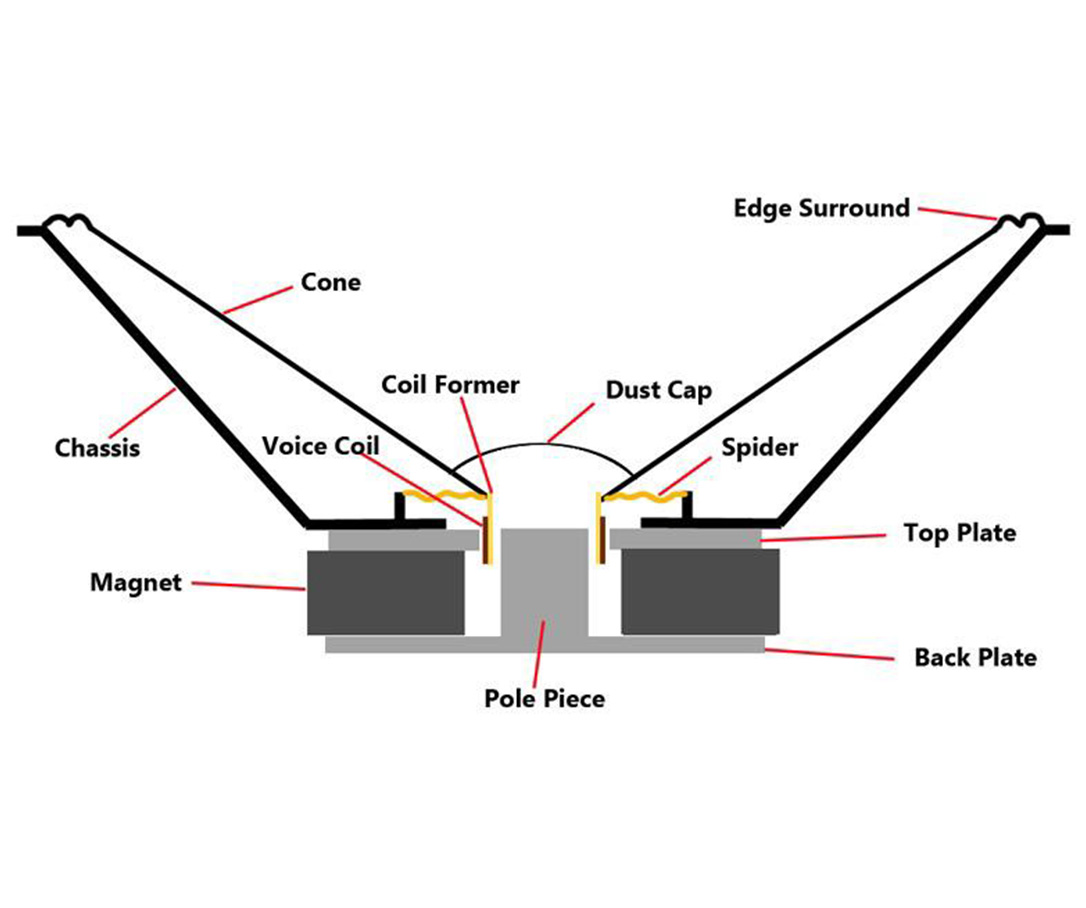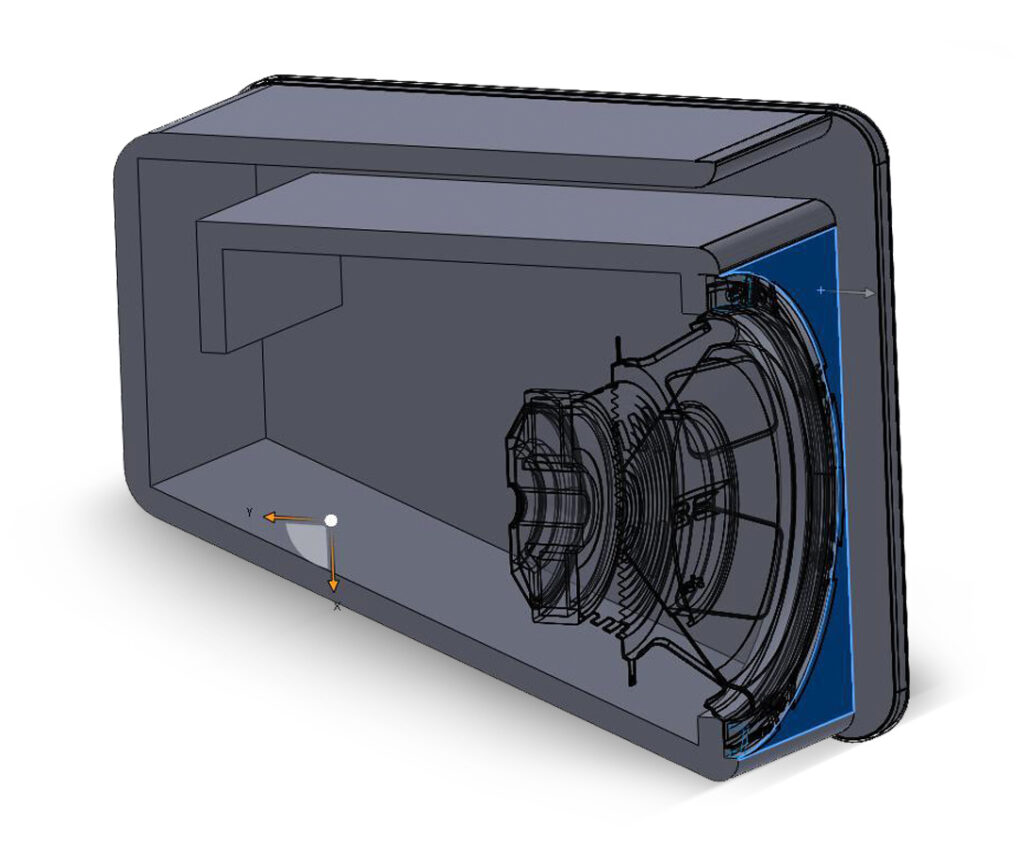How to understand TS Parameters

In the world of speakers and subwoofers a mystical set of measurements mysticise and baffle even the best of us! TS Parameters! developed TS standing for Thiele Small, the names of two people given the credit for the discovery and calculations, Neville Thiele and Richard Small.
TS parameters consist of a range of measurements taken from a speaker/subwoofer in a free-air testing situation, in modern times there are specific calculation software that work these out for manufacturers so they are extremely accurate.
Why do i need them? The TS parameters are very important when looking to calculate an enclosure for your speaker/subwoofer, they help to give the information in order to allow for correct volume, port size, tuning and more.
Lets take a look at the most usable parameters and the Acronym for them.
Fs or F0 – Resonant Frequency (Hz)
This is the frequency where the speaker/subwoofer plays with the least effort in a free air situation, The Fs/Fo is most important for subwoofers not so much for midrange or tweeters. This frequency shows the point in which the driver starts to have a roll off in response, for example a woofer with a 30Hz Fs will play fairly flat up to 35hz and down to 25hz with the output decreasing the further away from Fs you play. For sub bass its ideal to have a lower Fs if you want that lower bass feel, the higher the Fs the harder it is to achieve the lower bass notes, and the same goes for the opposite, the lower the Fs the harder for the woofer to hit the high notes.
Vas – Air Volume (L)
Vas describers the volume of air required in an enclosure for perfect compliance with the speaker/subwoofer, if the designed enclosure is negative of the Vas then the air will be hard to compress meaning the woofer will have to work hard to move and produce sound, if the enclosure is slightly positive of Vas the woofer will work efficiently as it doesn’t have to work as hard, however too big and this would work like infinite baffle where control and output can be lost. Its important to get a compliant Vas to get the best performance from your driver.
Q – Damping Factor
Q is often know as damping factor or quality factor, this is relative to the suspension, magnet and enclosure of the driver. This damping is calculating how the suspensions reacts, the better the suspension the more in control and accurate the driver can move and recreate sound. Q is broken down into 3 readings, mechanical, electrical and pneumatic
Qms – This is the mechanical or physical damping of the driver, the combination of the surround and spider of the speaker.
Qes – This is the electrical damping of the driver, this is calculated from the magnet assembly and coil of the speaker as it moves through its generated magnetic field. This is measured without the input power from an amplifier but can dramatically change when an amplifier is added. Lower Qes is suited to Bass Reflex or ported enclosure, higher Qes is best suited to sealed boxes.
Qts – This is a combination of Qms and Qes using the equation 1/Qms + 1/Qes this will give you he Q of the driver that will depict the enclosure type best suited to this driver. A Qts of 0.6 or above is suited to a very large ported enclosure or free air, below 0.6 work best with ported enclosures.
Qtc – This is the pneumatic damping, this is not a parameter offer on stand alone drivers as can only be calculated when the driver is in an enclosure, The volume of the box combined whth Qes and Qms will effectively change te “springiness” of the driver which in turn aides output, more spring more output.
Cms – Suspension stiffness (MpN)
This Parameters refers directly to the stiffness of the driver suspension, in relation to compliance the stiffer the suspension the less compliant the driver. It also directly links the Fs, the stiffer the suspension the higher the Fs, the softer the suspension the lower the Fs. So if you wanted a tight accurate driver stiff suspension is great, if you want low wobbling bass, softer suspension is great.
Re – DC Resistance (Ω)
This is the nominal resistance of the VC, this is not the same as the speaker impedance as that is an ever changing number with frequency. This is just like imagining the VC is s resistor, this is always lower that Impedance so a 4Ω speaker would have an Re of around 3.8Ω.
Impedance (Ω)
This is where confusion occurs, the impedance of a speaker will be displayed as a static number 1Ω, 2Ω, 4Ω however its actually a constantly changing figure of AC resistance, The static number is derived from an average of where the speakers bandwidth is mainly situated, the higher the frequency the higher the impedance rises. Its worth always referring to the drivers impedance curve graph when plotting boxes and choosing amplifiers in order to get the best performance from the driver.
Le – Voice Coil Inductance (mH)
This parameter is the inductance value of the Voice coil of the driver itself, this is the alternating movement of the VC from the AC current introduced which moved the VC then the Back EMF which pushes the VC in the opposite direction thus creating the waveform with peaks and troughs. High Le values are not good in midrange and tweeters as this means poor high frequency response, this is why you will often see premium speakers featuring shorting or faraday rings which help to dampen the inductance giving a better response.
Bl – Motor Force (m)
The Bl is a calculation of flux density x voice coil length, the higher the Bl the higher the motor force, in theory the higher the motor force the higher the efficiency, however as this is affected by many other things its not always true so dont worry to much about this parameter. The Bl is relative to the size of the woofer, for example a Bl of 10 is pretty normal, howver a Blof 10 on a 4 inch Mid is very high, on a 18 inch sub would be low. ALL RELATIVE
Xmax – Excursion Distance before Distortion (mm)
The Xmax is the maximum distance a VC can travel in a linear motion within the parameters if the magnetic flux, if the VC leaves the “GAP” where there is no longer controlled force this induces distortion. The Xmax is calculated by ((VC height)-(height of magnetic gap))/2 the combination of Xmax and Sd directly affects the SPL so these Parameters are important especially for a subwoofer. The Xmax is the maximum distance of travel before DISTORTION
Xmech – Excursion Distance before Damage (mm)
The Xmech is the distance of travel for a VC before physical damage occurs to a woofer, this often exceeds Xmax and takes to the point where the surround and spider can becomes over stretched and the VC is at risk of hitting the magnet bottom plate.
Sd – Usable cone area (m2)
The Sd parameter is the affective cone area of the driver, this will vary even amongst drivers of the same size as it accounts for the cone + 50% of the surrounds, the smaller the surround the more effective cone area. As previously stated when combined with Xmax the more Sd the better SPL from the driver.
Mms and Mmd – Moving Mass (grams)
Mms and Mmd are two ways of calculating the moving mass off a driver, Mmd is the direct physical weight of a percentage of the soft parts of the driver, the cone, VC, half the surround and half the spider make up in grams the Mmd. The Mms parameter is is the weight of the air on cone, a small pocket of air fit on the cone and this mass is calculated also. the heavier the cone the lower the Fs but also the lower he efficiency as the larger mass makes it harder to move.
SPL – Sound Pressure Level (dB)
The SPL or sound pressure level of speaker measure in decibels is determined by a number of factors which are listed about that create efficiency, the larger the SPL the better the efficiency of the driver. This is measured in 2 ways 1 watt at 1 meter or 2.83v at 1m, for a subwoofer an SPL from 88-90 dB is considered good, midrange speakers and tweeters due to their lighter construction can be much more efficient and even exceed 100dB.
In conclusion these parameters can give you an insight to the workings of your driver however they are not the be all and end all and many tend to change as soon as you introduce an enclosure, for best results use calculating software using TS parameters for your enclosures but if self calculating you really only need to consider Fs, Qts and Vas to get you a nice working enclosure

